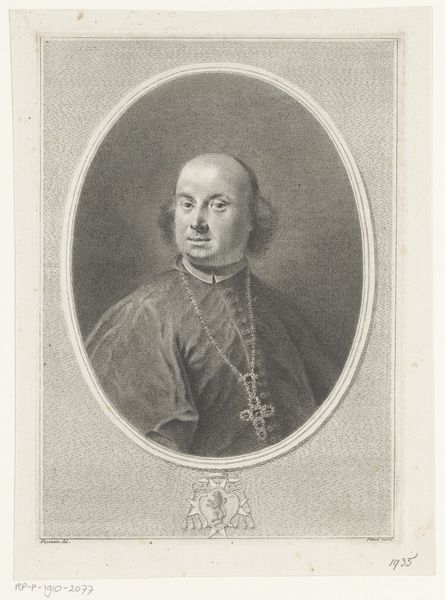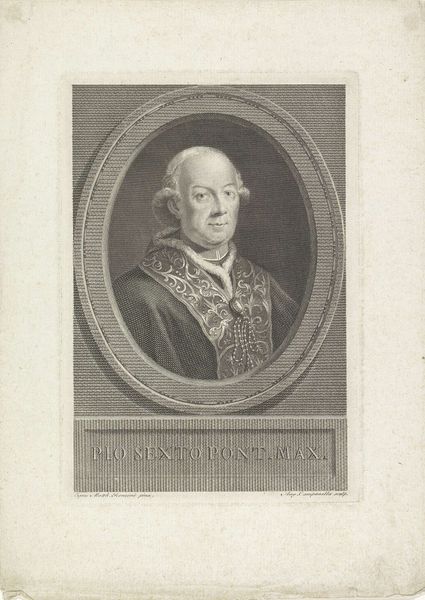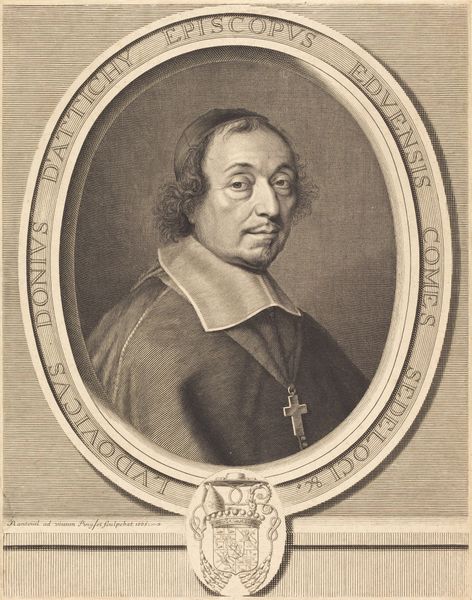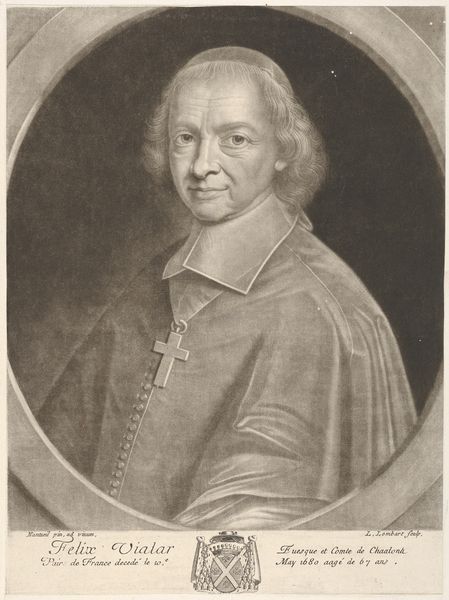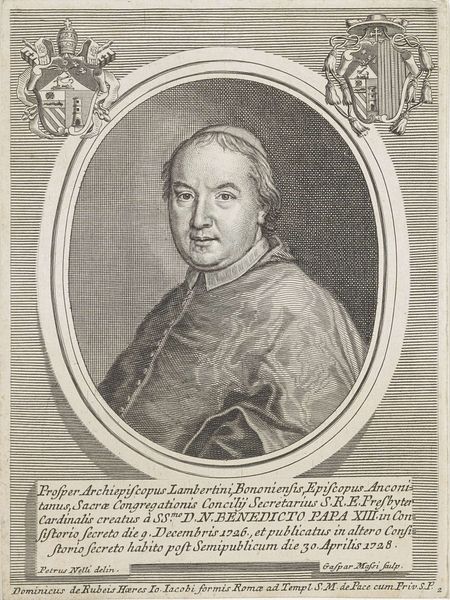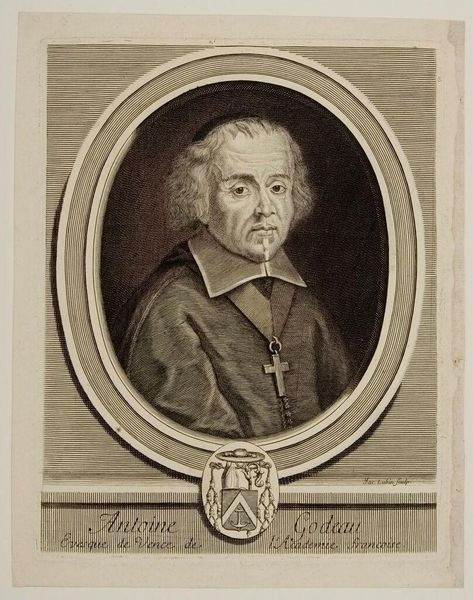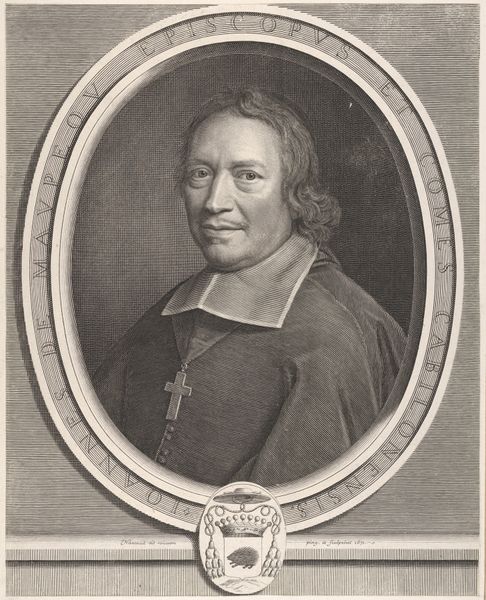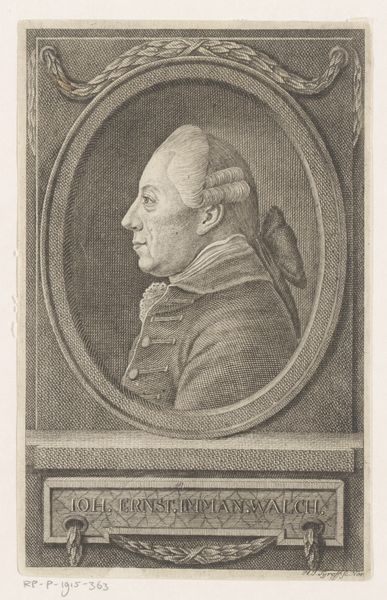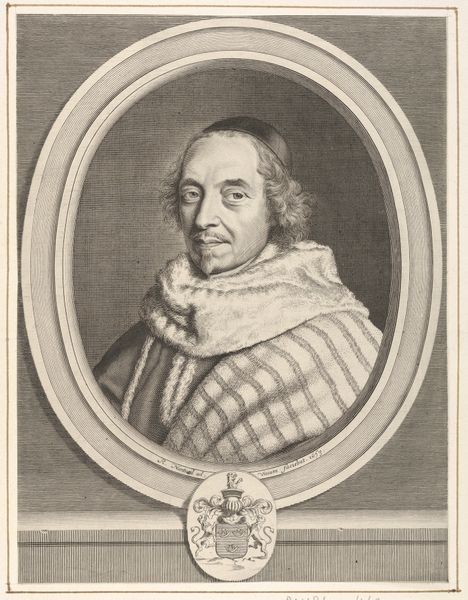
lithograph, print
#
neoclacissism
#
lithograph
# print
#
history-painting
#
academic-art
Dimensions: 388 mm (height) x 258 mm (width) (bladmaal)
Editor: This is Christian Horneman’s 1826 lithograph print, "Friedrich Münter.” It gives me such a formal, austere impression. What kind of a person was Friedrich Münter? Curator: Well, beyond this being an aesthetically pleasing Neoclassical lithograph, it’s fascinating to consider what Horneman’s portrayal of Friedrich Münter, a bishop, tells us about power and representation in 19th-century Denmark. What power structures are reinforced here? Editor: That's an interesting perspective. I was just focused on the historical aspect and how society wanted to portray influential figures. The cross medal and stern facial expression contribute a certain elitism. Do you see an element of propaganda? Curator: In a way, yes. Portraits were often commissioned to project a specific image. This print certainly elevates Münter, associating him with both religious authority and perhaps even military strength, considering the medal. Whose interests were served by this portrayal? And whose stories are left out? Editor: So, we have to consider the context. Who made this print, and for what purpose? I wonder what other artistic decisions contributed to this perception of authority, and maybe even what sort of "contemporary" resonance it carried? Curator: Exactly. Consider the rise of nationalism in Europe during this period. How might this portrait be interpreted through that lens? How does this image fit into the broader history of representation of religious figures? Editor: It gives me so much to think about - beyond just who is Friedrich Munter as an individual, but as a symbol within cultural movements. Thanks for putting this in perspective! Curator: It’s vital to look at how identity and power intertwine in art.
Comments
No comments
Be the first to comment and join the conversation on the ultimate creative platform.

